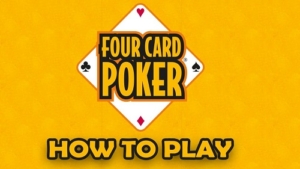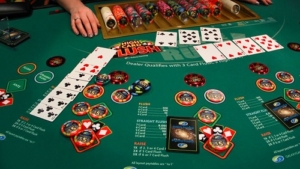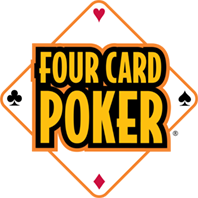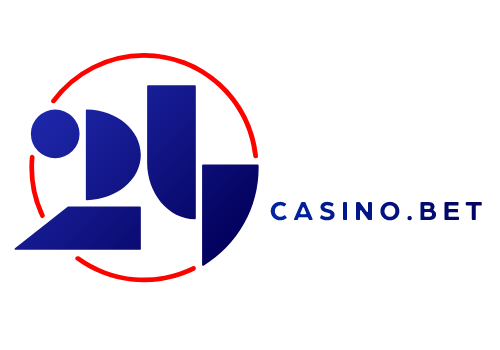Neo Beth | May 18, 2023 | Updated on: January 16th, 2024
Four-Card Poker Game
In the realm of proprietary table games, a few standout games have captured the hearts of players in the gaming industry. Among them is Three Card Poker, known for its favourable odds, relaxed pace, and thrilling potential for jackpot-like payouts on any hand. Building on the success of its predecessor, Four Card Poker has emerged as a newer game gaining popularity in casinos worldwide. With an additional card in play, Four Card Poker introduces a unique challenge, testing players’ strategies and keeping them on their toes. While the game offers advantages to players with certain rules, the house gains an edge by receiving six cards compared to the players’ five.
Australian Casinos Online with 4 Card Poker
 How to Play 4 Card Poker Online: A Step-by-Step Guide
How to Play 4 Card Poker Online: A Step-by-Step Guide
If you’re familiar with three-card poker, transitioning to four-card poker will be a breeze. Even if you haven’t played the three-card version, you’ll quickly grasp the rules. Here’s a detailed breakdown of how to play four-card poker online:
- Place the Ante Bet: To participate in a hand, you must make an ante wager. Your goal is to beat the dealer and win this bet.
- Consider Aces Up and Jackpot Bets: In four-card poker, the Aces Up side bet is always available. Additionally, some tables offer progressive jackpot bets ranging from $1 to $5. These bets are solely based on the strength of your hand and don’t involve beating the dealer.
- Check Your Cards: You will be dealt five face-down cards while the dealer receives six cards. The dealer’s hand consists of five face-down cards and one face-up card.
- Raise or Fold: After examining your cards, you have the option to raise the ante by 1x or 3x or fold your hand. If you choose to fold, you forfeit your original ante bet.
- Form a Four-Card Poker Hand: Assuming you decide to raise, you need to form a hand using your best four cards and discard the weakest card from your initial five-card hand.
- Compare Hands: The dealer reveals their cards, and you compare hands. If your hand beats the dealer’s hand, you will be paid an amount equal to your original wager for each of these bets. However, if the dealer’s hand is stronger, you lose both the ante and raise bets.
- Check for Bonus Payouts: If you placed Aces Up and/or Jackpot bets, you may be eligible for bonus payouts. The specific bonus payouts in four-card poker depend on the pay table being used.
By following these steps, you’ll have a solid understanding of how to play four-card poker online. Enjoy the game, and good luck!

4 Card Poker Basics
When playing 4 card poker, it’s important to familiarize yourself with two key rules: the poker hand rankings and the specific pay tables used by the casinos.
Hand Rankings:
Similar to most poker games, 4-card poker in Australia follows the standard hand ranking system, albeit with a slight variation. In this game, players are dealt only four cards for their final hand. This means that a straight can be formed with just four cards, as well as a flush. Here are the hand rankings for 4 card poker in Australia:
Four-of-a-Kind
This is the highest-ranking hand in 4-card poker. It consists of four cards of the same rank, such as four Aces, four Kings, or four Queens. Achieving a four-of-a-kind hand demonstrates exceptional luck and skill.
Straight Flush
Following closely behind the four-of-a-kind is the straight flush. It is a combination of four cards in sequential order and of the same suit. For example, having the 5, 6, 7, and 8 of hearts would form a straight flush. This hand is a testament to both luck and strategic decision-making.
Three-of-a-Kind
The three-of-a-kind hand consists of three cards of the same rank, accompanied by a fourth card of a different rank. For instance, having three Jacks and an unrelated card would make a three-of-a-kind hand. This hand requires a good understanding of the game and can lead to favourable outcomes.
Flush
A flush in 4 card poker involves having all four cards of the same suit. The order of the cards is not significant in this hand. For example, having the 2, 5, 9, and King of clubs would constitute a flush. It is crucial to be attentive to the suit of the cards to identify this hand.
Straight
A straight is formed by having four cards in sequential order, irrespective of their suits. It is essential to note that an Ace can be used as the highest or lowest card in a straight. For instance, having the 3, 4, 5, and 6 in any combination would create a straight hand.
Two Pair
As the name suggests, the two-pair hand consists of two sets of cards of the same rank. For example, having two Kings and two 7s would form a two-pair hand. This hand demonstrates the ability to identify matching cards and make strategic decisions accordingly.
Pair
The pair hand involves having two cards of the same rank and two unrelated cards. For instance, having two Queens and two non-matching cards would constitute a pair hand. Although it is one of the lower-ranking hands, it can still lead to favourable outcomes if played strategically.
These hand rankings serve as a guide to determine the strength of your hand and make informed decisions during gameplay. Understanding the hierarchy of hands will enable you to strategize effectively, assess the value of your cards, and make optimal choices when it comes to raising, folding, or continuing the game.

Pay Tables: Impact on 4 Card Poker
Pay tables hold significant importance in the realm of casino games, and their influence on the house edge cannot be overlooked. This also rings true for 4-card poker, where the pay table employed can greatly impact the overall gameplay.
In this poker game, there are two specific pay tables that players need to be mindful of: the pay table for the Aces Up bet and the Ante bonus. Understanding these pay tables is crucial for maximizing your potential winnings and optimizing your strategy.
Ante Bonus Payouts:
As mentioned previously, certain casinos offer a bonus payout to players who achieve a qualifying hand. Remarkably, you can qualify for this bonus even if you choose not to place an Aces Up bet.
It’s important to note that the actual payout values may vary depending on the specific casino you are playing at. However, to provide you with an example, here are some sample Ante bonus payouts:
| Player’s Hand | Payout Odds |
| Four-of-a-Kind | 25 to 1 |
| Straight Flush | 20 to 1 |
| Three-of-a-Kind | 2 to 1 |
Remember, these are just illustrations of possible payouts and should not be taken as definitive values. The precise payouts will ultimately depend on the casino’s chosen pay table.
Understanding the pay tables for the Aces Up bet and the Ante bonus empowers players to make informed decisions and strategize effectively during gameplay.
Ace Up Payouts:
The Aces Up side bet offers an additional opportunity for excitement and potential payouts. This side wager rewards players based on the strength of their hand. Here are the typical payout odds for the Aces Upside bet:
| Player’s Hand | Payout Odds |
| Four-of-a-Kind | 50 to 1 |
| Straight Flush | 30 to 1 |
| Three-of-a-Kind | 7 to 1 |
| Flush | 6 to 1 |
| Straight | 5 to 1 |
| Two Pair | 2 to 1 |
| Pair of Aces | 1 to 1 |
By placing the Aces Upside bet, you have the chance to win significant payouts based on the strength of your hand. If you manage to obtain the rare and powerful hand of four-of-a-kind, you will be rewarded with an impressive payout of 50 to 1. Achieving a straight flush, a hand that combines both straight and flush, will grant you a generous payout of 30 to 1.
Even more common hands such as three-of-a-kind, flush, straight, two-pair, and a pair of aces offer favourable odds with payouts ranging from 1 to 1 to 7 to 1. These payouts add an extra layer of excitement and potential rewards to your four-card poker experience.
It’s important to note that specific payout odds may vary depending on the casino you are playing at. Before placing your Aces Up side bet, it is advisable to review the pay table to understand the exact payout structure. Having this knowledge will enable you to make informed decisions and optimize your potential winnings by leveraging the strength of your hand.
Understanding the Odds in 4 Card Poker
When it comes to 4-card poker, understanding the odds is crucial for making informed decisions and maximizing your chances of winning. The odds can vary depending on the type of bet and your chosen strategy. Let’s take a closer look at the different house edges associated with 4 card poker:
Ante Bet:
The optimal strategy for the ante bet results in a house edge of 2.79%. This means that, on average, the casino has a 2.79% advantage over players who make this bet.
Overall 4 Card Poker House Edge:
When considering both the ante and raise bets together, the optimal strategy can lower the house edge to 1.30%. By strategically timing your raises, you can further reduce the casino’s advantage and increase your potential returns.
Aces Up:
The Aces Up side bet carries a higher house edge of 3.89%. This means that the casino has a greater advantage over players who make this bet. It’s important to be aware of this higher house edge when deciding whether to place an Aces Up wager.
Progressive Jackpot:
The odds for the progressive jackpot bet can vary significantly depending on the size of the jackpot itself. Initially, the progressive jackpot carries a higher house edge, offering less favourable odds. However, as the jackpot grows, the odds can improve gradually. The specific odds for the progressive jackpot bet will depend on the current size of the jackpot.
It’s worth noting that many online resources often refer only to the 2.79% house edge for the ante bet. While this is a commonly cited figure, it only represents the odds for the ante bet in isolation. To get a more comprehensive understanding of the game, it’s essential to consider the overall house edge when incorporating the ante and raising bets together.
By familiarizing yourself with the odds and house edges associated with each bet type in 4-card poker, you can make more strategic decisions and adjust your gameplay accordingly. Remember to assess the potential risks and rewards before placing your bets and have a clear understanding of the progressive jackpot’s evolving odds based on its current size.










































































































